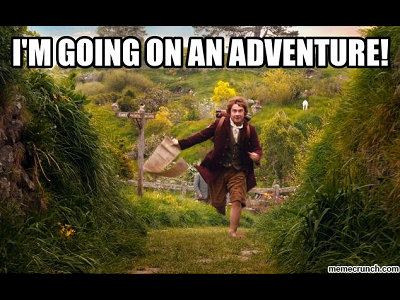
- by Dr. Mike
In May 2014 I founded my one-man show called Improventions as my personal launch pad for finding great entrepreneurs to work with and help them develop the core software for their startups. That was the basic idea from the start. I was transitioning just about everything in my life as my earlier engagement as a startup CTO in Singapore was past history.
Moving to Malaysia, the promised land of coconuts, felt like a good move for all other aspects of life except employment. With my background at that point, working for someone else just didn’t seem like a viable option and the previous year gave me such a ride in the startup scene that I had to stay in the game somehow. I had also left academia long ago and didn’t see much point in doing anything else than perhaps some one-on-one kind of support (which later turned into my coaching track).
A brave crazy jump off the cliff was the only move I could make. So I jumped. I was bound to either hit the ground and become nothing but an ugly stain on the greener pastures that I was about to move in or fly above the world. Either way, no more business partners or safety nets of any kind. This time I went solo! Or well, I had my coconut with me… 😉
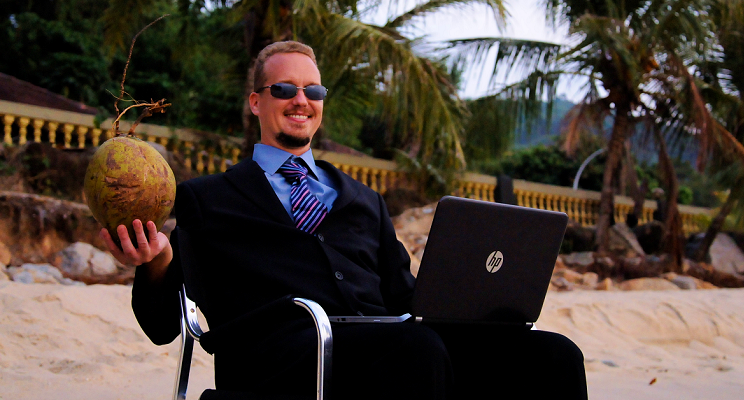
Go solo or go home. My coconut was my only companion. I never thought I would figure out how to start on Upwork!
The core of my freelance business when I decided to become a freelancer
From the beginning, perhaps because of experiencing the harsh reality of a startup CTO for a year before, I had the understanding that the only way a small company of 1-3 people can survive is that the skills of those individuals bring in the cash. For my startup, I had to make our product sellable from the point where it was started and left unfinished by someone without much product development skills. So, I had to make it more or less from scratch. The successful part of our enterprise was getting really cool pilot customers and our promo video of the highest quality produced by Microsoft Singapore.
Thus, making products from scratch is what I had already gone through. At least the technical capabilities and the user experience were not the bottlenecks that killed our business, the reasons were elsewhere. Because of this, I had the impression of myself that I can indeed build rather complicated products from scratch with the high velocity required from any good and ambitious startup CEO such as my ex-business partner.
The other side where I thought I had an advantage of sorts was the scientific background. An unusually intensive but successful Ph.D. process as the first Finn at Kyoto University, Japan, gave me a healthy amount of confidence in all positions I had after that experience, but there was no way to turn the academic part into a lucrative freelance business that I would have liked.
My awarded research work on VR-based training simulators was not a great fit with any kind of freelance offering in 2014 (although I went back into that topic as a freelancer later in 2017). Academic writing was not my thing as such, I was always more into creative tech stuff anyway. Plus, native speakers would always have a permanent advantage in that business. No point going there. Leaving academia was one of my drivers to go freelance in the first place! The academia felt always too slow for me to see any impact of the work I did there.
Another part, the more practical part relating to my research background, was those nearly four years at ABB Corporate Research, Sweden, in an applied research lab where our team’s mission was to come up with products for different parts of the corporate group consisting of over 30 different companies at that time. This period was where I learned a great deal about project management, intellectual property, leadership, and strategic initiatives.
I had spent a year inventing new ways to visualize the power grid and another year as the Usability/User Experience Lead of the dual-arm assembly robot YuMi. I even managed to start and lead a few initiatives, most notable being the wearable computing and augmented reality (AR) initiative in the years of the first iPhone and the initial AR software development kits available for smartphones came about.
Finally, at the bottom of it all, was my part-time and full-time software engineer career back in Finland. That’s where I learned how to code properly. My programming timeline explains the length and width of what I knew I could make with various kinds of software development environments. The development wouldn’t become a bottleneck, for sure. It was the least of my worries.
So, from the early days on, my business plan (that I never wrote down) included offering one core service, product development for new businesses with a model called CTO-as-a-Service, fortified by my added-value services:
- Intellectual property generation (coming up with patentable ideas, making prototypes to implement them, and writing initial patent descriptions).
- Strong project management with a special focus on identification and mitigation of all risks (not only the technical ones) involved in developing new products for new businesses.
- Leadership for getting a full product invented, designed, developed, and launched.
This was something I had already done and had merits in. So, against this background, I was determined to boldly go where no (coconut) man had gone before. 🙂 (The coconut theme has been there from Day 1 when I finally managed to settle in Penang, Malaysia… no better place since even the flag features something that looks like a coconut tree, but it is not, actually.)
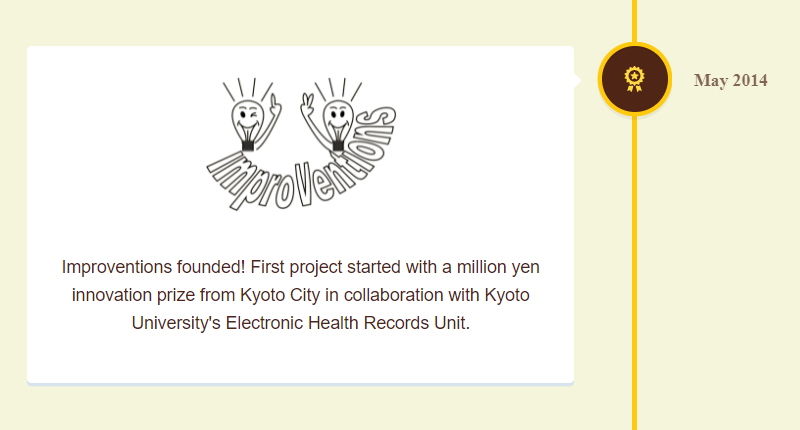
A solid start using my old connections back in May 2014… which now feels like ages ago. No wait, it is! 7 years and 1 month at the time of writing this.
As I was destined to go freelance, I knew from the beginning that I’d need to get something fresh and cool to show in my official portfolio. All I could really do is highlight my background which fortunately was a bit unusual compared to most. I drafted a portfolio PDF for summarizing the previous 14 years of work and studies, one short page each.

One of the highlights from my pre-freelance career that I mentioned during intro meetings was in the world of industrial robotics.
Early on, I figured the key to these things is to have good photos and images, and a good story around each of them. That’s what I tried to do first. And some of it even worked at some point, particularly later on. I remember one good client’s jaw-dropping when showing this picture (grabbed from a YouTube clip)… “Is that Obama???” to which my well-rehearsed story continued with “Yeah, looks like it is Obama, but the really famous one in this photo is YuMi The Robot!”
An unexpected freelance journey: That first step
It began… well, it began as you might expect. In a hole of an apartment of a 28-floor Singaporean skyscraper, there lived a VR doctor. 🙂 Seriously, not joking, jumping off the cliff without any kind of safety net is crazy! And what’s even crazier was that my wife was about to make the same move some months later… and we had a baby too. The global freelance world seems so large it really makes you feel like a tiny Hobbit despite all previous achievements.
The first months, of course, were as interesting and absolutely great as they were horrible, hopeless, suffocating, and frustrating, at the same time. That is, the normal way of starting a business! I spent quite some time prepping things properly. Read loads of articles on freelancing and business development in general, did my crash course on accounting and business administration basics which I had no clue of whatsoever, set up my portfolio and website… But at some point, I realized I was prepping way too much and doing way too little actual business.
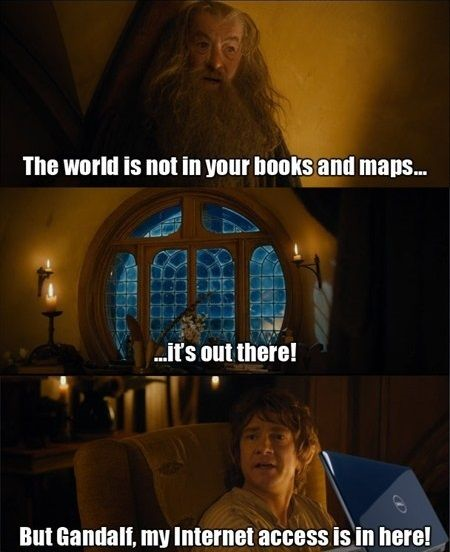
Doing all the preparations inside your safety zone, your personal Hobbit Hole, is OK for a while but is not to be extended for any longer period of time. The freelance world was not in my books. Doing is the best teacher anyway.
What I didn’t do is what most starting freelancers tend to and probably should do: pull all the strings from previous employers and contacts to get leads for projects. No, not me. I just pulled a couple of projects from ex-employers and other connections, just enough to get something going. I knew where I was going but wasn’t sure how to get there fast enough. The global startup scene.
To many of my ex-colleagues, this was an unexpected move, a truly “unexpected journey.” My ex-cofounder said something like “so you set up your own business?!” as he was probably suspecting my business skills (which were known to be zero) to be adequate for such a(n ad)venture. That was a way more valid concern than I might have wanted!
My ex-student buddies in Japan could not believe that such a life is even possible as they tend to know their next career moves several years in advance which brings predictability and psychological safety to just about everything. The normal thing to do is to play all the university politics, keep getting better positions, and most importantly, stay on the public sector side of funding. So I thought “screw all that, I’m gonna freelance with a Ph.D. like a boss!” Success is just a matter of time, right? 😉
As mentioned, I knew I had to have more stuff to show to truly new potential clients, so my portfolio had to be growing quickly with the good work I do as a freelancer. Starting offline with old connections, I got my first project as a prize of winning an innovation competition in my ex-home town in Japan. A great jumpstart with the help of the small part of my academic network that could have synergies with my current, quite a renegade, move in their eyes.
I did short-term consultancy work for various startups and other small software companies in Singapore while at the same time traveling to Malaysia every couple of weeks to search for a proper house and set a new life up before my wife was bound to quit her job.
I made a Kinect analyzer program Kinect Visual de Bugger that I thought I could sell as a product and avoid doing 100% project work from the beginning. I did a bunch of things. (More about my early offline freelancing days is explained in this article: Being a Freelance Software Developer – It’s Not About the Code.)
But the pain in the offline world is that it can be quite slow until the point you have grown your network to be bigger than you can handle. And it is a long way to get there. As I hated physical networking sessions and events of that type, I was thinking of something faster.
Well, everything done online is fast, right? 🙂
From my previous CTO job I knew Elance.com (it was the original freelance site that was merged with oDesk to become Upwork in December 2015) and had hired a very, very good developer just half a year earlier. The job I had defined for him was to test another Kinect development stack that had gained some popularity back then so that my product development tasks on the primary stack would not suffer from a distraction.
That guy was wonderful! He wrote perfect code, gave good suggestions, and had an extremely straightforward way of working with a perfectly professional grip. All in a few days’ turnaround cycles. Good and fast. I liked everything that guy did! So, having him as an example, could I do the same? Perhaps…
Anyway, I signed up as an Elance freelancer in October 2014, i.e. a year before the current Upwork came about, and I never questioned can you make money on Upwork or is Upwork good for freelancers. I had seen many do it. It looked feasible.
But without trying yourself, you wouldn’t believe how hard it is to make yourself visible enough on an online freelance site that mainly showcases the freelancer’s past stats of doing projects on that site… which in the beginning, of course, are zero. By stats I mean the core metrics of the system such as total earnings, hours worked, number of projects completed successfully, all the 1 to 5-star ratings from previous clients, and so on.
I read somewhere (years later, though) that on Upwork about 50% of the freelancer wannabes joining the site never see a penny. That is a massive dropout rate! Additionally, it is only a small fraction of people who manage to get anything truly good going on over there.
Since my profile wouldn’t come up high in any keyword search (which is of course easy to test) there seemed to be only one way up: do projects of one single type of client until I’m on the first page of the search. On Elance, it didn’t really matter what references from my previous career and what achievements I had. This is because of the way Elance (and any freelance site today, actually) works: no stats, no visibility, no leads, no calls from clients. Just silence after sending a proposal.
Could I compete in a large market like web development? No. Could I do something complicated with an insanely high rate in the beginning? No. But I thought I should be able to start from the middle range and quickly work my way up as I had some demonstrated credibility. It just didn’t show through the interface of that platform. So, I figured, I had to choose my first clients very carefully…
From the beginning, I was guessing that if I just patiently pushed through the first years (yes, I expected it to take several years!) getting good Kinect apps developed for people in positions that I had been, namely, startup founders and researchers, should be the lowest hanging fruit. I know how those guys think. And only those two groups of people would appreciate my value-added services and my background as a whole.
$30/h was the price I set based on what many starting freelance software developers seemed to charge and it was around the pay I got from a top Singaporean university a bit earlier. (Later, I realized my calculation was completely wrong, but that’s another story.) But I never even considered playing the low-balling game, i.e. underbidding everyone else’s bids on a project even if I had no other choice. I knew that would backfire the moment the second client would look at my track record. My first work history item would look too cheap to be credible.
The desolation of ssss….stable income
Back then, at the end of 2014, I had no idea if this Elance (Upwork) thing would ever get me anywhere, really. How do I start making money on Upwork? I just tried it out. I didn’t put much effort into pushing myself forward as I was quite busy with my offline projects that were not great, just OK. Doing project after project kept me just about funded. But even the biggest projects I got were rather generic consulting or interim CTO gigs that I couldn’t charge very much for so I realized I had pinned myself on doing projects that didn’t leverage my background and started too slowly.
I had gigs here and there in Singapore where I could meet people live. I took a lot of folks out for catch-up coffee or lunch and was networking every week while executing my projects the rest of the time. But as I was looking at the balance sheet (a term I had just learned) it looked like doing things this way not only took a lot of time (even if Singapore is very well organized, the peak hours are horrible for any kind of travel), every cup of coffee I bought cost money also. And you don’t want to meet your clients in the cheapest food courts but in places where you can talk business properly. It felt like an epic journey week after week, soon month after month, that wasn’t going anywhere. I saw myself getting stuck soon…
Another part of The Hobbit came into my mind: that never-ending journey through Mirkwood full of obstacles before you reach The Lonely Mountain full of treasures. My offline projects were way worse than what I had hoped for in terms of speed. It was too slow to get even a small consulting gig! Now, I was that poor little Hobbit looking for something specific in a mountain of gold (as Singapore is a very rich country), that priceless Arkenstone, the king-maker jewel. I thought I should have been able to find it faster. Was it the market, or was it me? I figured the bottleneck was my efficiency in reaching the right people who could hire me quickly. The best market for me wasn’t in this part of the world at all!
So, the issues I faced in my first year included quite a few critical points:
- My local clientele in Singapore didn’t match what I intended to do as a freelancer (and Malaysia would be an even worse match).
- I had no global clients besides a one-off gig from Japan.
- My portfolio wasn’t relevant to my intended global clientele.
- I had no idea how to market my services online.
- I lacked an efficient sales channel altogether.
- My first product tanked completely.
- I had only about 6 months to figure out everything and make it work somehow.
On top of that, a big part of my time would need to be spent setting up a new life in Malaysia, preparing everything about moving abroad, working out visas, etc. The workload and the uncertainty seemed unbearable if I couldn’t reach good clients with minimal effort. There wouldn’t be any point in keeping my hopes up regarding my future Elance career if the efficiency wouldn’t increase. It would be just another nightmarish Mirkwood!
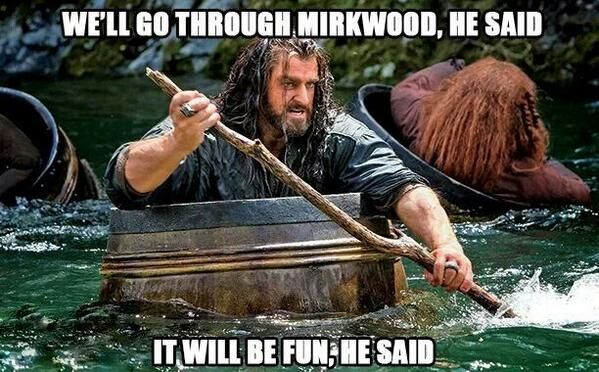
As none of the attempts I made were working out fast enough, my epic journey totally felt like going through Mirkwood, an endless forest where you simply get lost forever.
So, I decided to do what I could with the offline business side, and make sure I don’t get too lost in the world of online freelancing, as I didn’t have any certainty about that. It was, in fact, more uncertain than my ongoing business, and an even bigger issue was the overall efficiency in making actual sales. By keeping my effort to the minimum on Elance, in theory, I would:
- Not waste time on proposal battles that I saw everyone else doing (it looked truly miserable).
- Not make myself frustrated by the lack of responses to my proposals when not sending that many in the first place. (Seriously, getting no reply would teach me nothing.)
- Leave behind a perfect track record from the first project on, once I eventually got one, which would allow me to speed up the business there rather quickly.
This was quite the opposite of how most people seemed to start online freelancing. It was completely unorthodox according to the guides I read because back then, sending proposals didn’t cost anything at all!
I knew my business plan was good and my targets clear, so the only gap had to be in the sales channels. That was the bottleneck, I figured.
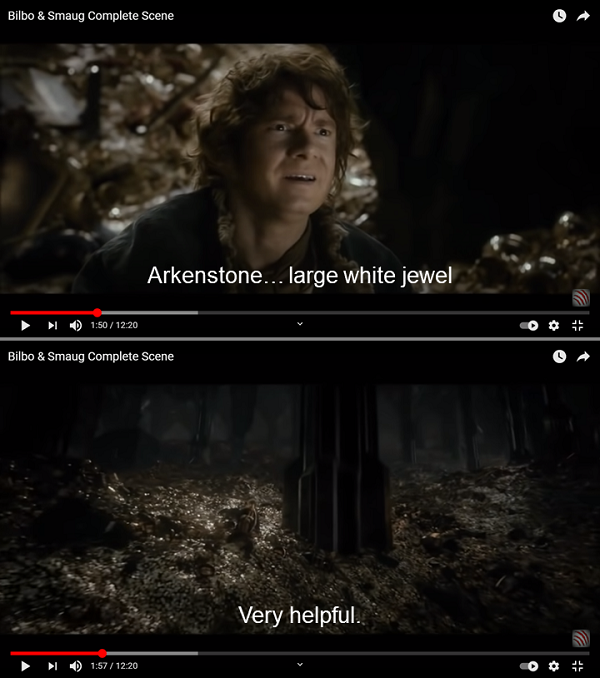
Looking for a specific target among millions of decent but not great potentials turned out to be inefficient. Very inefficient. I had to find a faster way to find the best clients than doing physical meetings. Otherwise, I’d never survive the process.
Also, there was no guarantee of success on this Elance I was trying out, so quite counter-intuitively, my best guess for an efficient start online was not to push hard for it but patiently wait for the perfect client to come along. Otherwise, there would be no point as my offline business boat was holding water, just about. Getting to a much better state of a more efficient sales process was my sole aim.
If I couldn’t reach good clients with minimal effort, there wouldn’t be any point in keeping my hopes up on Elance. The efficiency would not increase. It would be just another Mirkwood for me! (Later on, I figured the formula that would help anyone dodge similar situations, described here: Let’s Science the Shit Out of Unstable Freelance Income! But I didn’t figure it out yet at this point but much later.)
So, I decided to do what I can with the offline business side, and make sure I don’t get too lost in the world of online freelancing, as I didn’t have any certainty about that. It was, in fact, more uncertain than my ongoing business, and an even bigger issue was the overall efficiency in making actual sales. By keeping my effort to the minimum on Elance, in theory, I would:
- Not waste time on proposal battles that I saw everyone else doing.
- Not make myself frustrated by the lack of responses to my proposals when not sending that many in the first place. (Seriously, getting no reply would teach me nothing.)
- Create a perfect track record from the first project on, once I eventually got one, which would allow me to quickly speed up the business there.
My aims were efficiency and speed once (eventually) I would get it going. If that was not to happen, I should drop the whole thing right there. No point otherwise. Elance would not solve my main problem.
This was quite the opposite of how most people seemed to start online freelancing. It was completely unorthodox according to the guides I read (meaning, I just skimmed through… they looked really dumb to me even if I didn’t know the game yet). And back then, sending proposals didn’t cost anything at all!
These days, Upwork charges a small fee for their digital currency called Connects which is a decent idea for setting a tiny limit on the number of proposals from one freelancer… an obvious counter-measure against those who just “clog the toilet” with their copy-pasted low-quality proposals.
Those people tend to send a lot of proposals to just about any project they might (or even might not) be able to do, exhaust themselves in an activity that is not only a bit up to luck but doesn’t even give you any feedback upon which you could improve your approach (just see the Upwork Community topics with a search term “how to get the first project”… it is still one of the most popular topics people really need a lot of help with).
My first version of the freelancer profile had a simple but accurate title with the right keywords (“Ph.D. level Kinect expert”), and a tagline telling just about everything essential (“Quick deliveries of Kinect-based projects with guaranteed Finnish software quality and Japanese scientific precision”). Nice and short. Then a short description of my value-added services. That told just about everything to my intended clients. Highly focused. Not great, but good enough.
I didn’t really look for good examples or how other people tried to attract clients. It felt like the only way to go in my case anyway. Quite interestingly, I never listed all of my work history (just relevant parts), programming language, and tech stacks that I knew (many!), languages I spoke (even more!), and many other things that the Getting Started guides told me to. They make everyone’s profiles look the same. That didn’t work for me.
In short, my entire approach was the exact opposite of how you’re supposed to do it. I thought, I either do it smart without much extra effort, or I let it go and put all my focus on my offline business. My main driver was reaching good clients worldwide faster than I did in the local circles in Singapore and I saw multiple other ways of getting there (which later worked out brilliantly, see more about sales channels in this article: Freelancer’s Sales Channels – 5 Proven Examples Other Than Freelance Sites… basically you just go where your dream clients go).
What else I did exactly in the meanwhile during those several months is another story, but mostly, I was checking Elance job listings once a day, not even every day, for just a few minutes and skipping just about all of them. This process didn’t interfere with my offline projects and I thought that probably I need to keep doing this for several months before anything happens… if anything at all! I felt like an alligator, just patiently waiting for my opportunity.
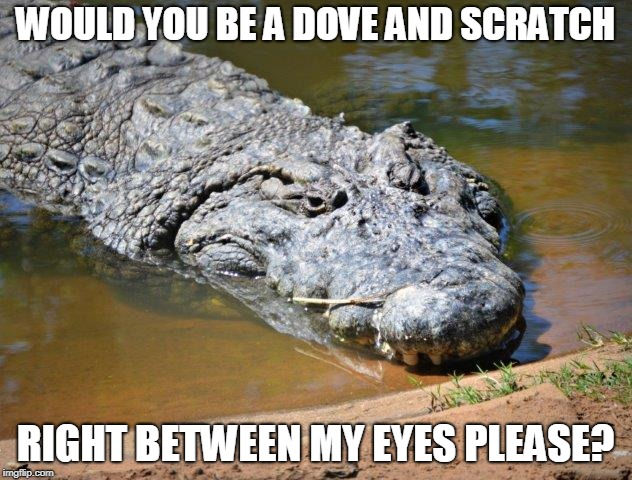
Just waiting for the right target like an alligator was the best approach in my case. It doesn’t make much sense when you think about it, does it? But it solved my efficiency problem.
The battle of the five amazing clients
Soon, it was months since I signed up, several months of “gatoring” already. I thought this was not going to work out. There were some decent-looking gigs and I even considered sending proposals, but things looked so cheap I didn’t bother. I sent some proposals just to see how the thing works, even though I knew it from the client’s side already from the previous year.

I would never say I gave up all hope, but the objective me was looking at the non-existing results and about to dumb this **it.
The first job on Upwork
Eventually, the first true opportunity came. A great-looking potential from a Palo Alto-based startup in the very beginning of 2015. A young founder (who I later get to know to be quite a brilliant guy) backed by reasonable seed funding. The first Skype call I ever got through Elance was all about listening to their product idea (some software to be built on Kinect with Azure backend). That was exactly the same thing from the technical point of view (literally, the exact same tech stack for all parts) but with a different business idea than what my startup had! This was the perfect match!
This happened at the beginning of February 2015. That’s basically after 4 months of “gatoring” for meeting the right person. This young founder was the first person who was seriously interested in buying my CTO-as-a-Service!
It went all the way to late May to actually start the project. So, after almost 4 months of hunting for a good project, it still took almost 3 more months to get it going! The whole process was slow since we had to align in the approach, and I had to fully understand the aim of the first year of the client’s intended business before I could promise realistic things. I couldn’t possibly overpromise, and any kind of under-delivering later would definitely kill my start on Elance.
I wasn’t going to wait another 4 months to meet my next dream client. (The full timeline of my Elance/Upwork adventures, is available at: http://improventions.com/highlights.html)
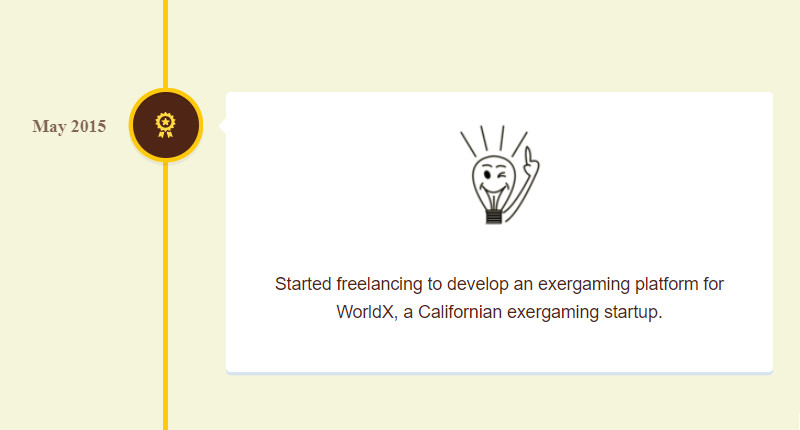
The first-ever person I got to talk with was the best kind of client I could ever have. I found my Arkenstone!
Quite interestingly, the first client is probably still the most legendary one in my books. The project that enabled my Elance/Upwork breakthrough for good.
This brilliant Silicon Valley-based startup founder was the first person I met via Elance. However, he was not my first client, officially. I did get a small research prototyping project first, starting in April, so in a sense, my first client became only my second one. The prototyping I did for the first official client paid $2,340, not more than that, and I spent less than 2 weeks earning it.
It was really easy to get since the client was a professor and his Ph.D. student was researching something that needed a Kinect application as a research instrument. I was perfectly aligned and it was a matter of a 15-minute call with the prof to get the thing going. Of course, I thought it was a good enough start as a first official project, although it wouldn’t feed my family for long! But you have to start somewhere and this was going to make my start great compared to $0 earnings and I had the best kind of client who was ready to get started for real.
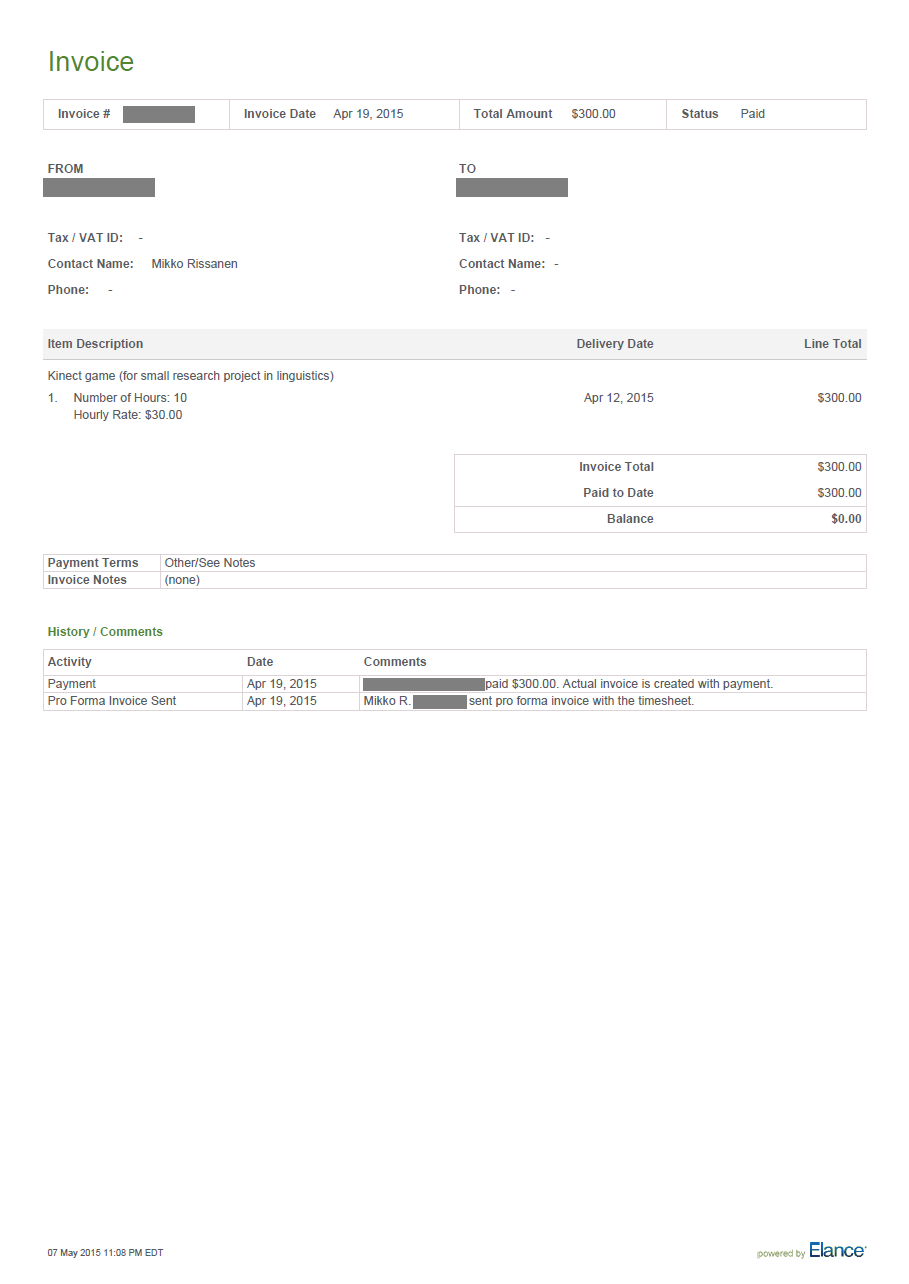
My first invoice on Elance. The first week of an hourly job was worth a few thousand bucks in total. Not complicated, but a good start. And without any low-balling, just months of opportunistic waiting!
“So I had just figured out how to start on Upwork!”
Coincidentally, or perhaps there were higher powers involved, I also got a request from a very interesting Japanese design house. Not because of having contacts from my student days there, but just via Elance. This was most unexpected as I hadn’t considered design houses to be part of my clientele. But I quickly saw an opportunity here as indeed the client would produce all the visuals that would look way better than what I could make on my own, so I might get a very nice early portfolio item.
The first project, the research prototype, would not be publishable. That only brought stats and earnings visible on Elance.
All these designer guys needed first was some help in understanding Kinect and explaining how to make some modifications to sample programs in Unity (the leading game development platform) that I knew already to some extent. I helped them. That was my first fixed-price project, a whopping $300! But most importantly I got good contact with them and a 5-star rating. Then I also realized many clients do small test projects with freelancer candidates to get to know their capabilities and speed.
Things went well, so we quickly continued with their original aim of making a complete game installation for their customer, a new shopping mall in Osaka which runs a summer event for the duration of August. This project was dynamite and it became my best portfolio item that I’m still proud to present today as a job well done with the best possible outcome for my client. (Next year we made a similar even bigger installation and it went to well I had to share some insights that inspired many designers and developers alike.)
After the August event, they released a video about it on YouTube with my name in the credits. Another about $2,500 earned and a great-looking reference. They even mentioned my name in the credits, how nice is that?!?! (Now, 6 years later, I’m still proudly presenting this whenever someone asks me about the best use of Kinect or other 3D sensors.)
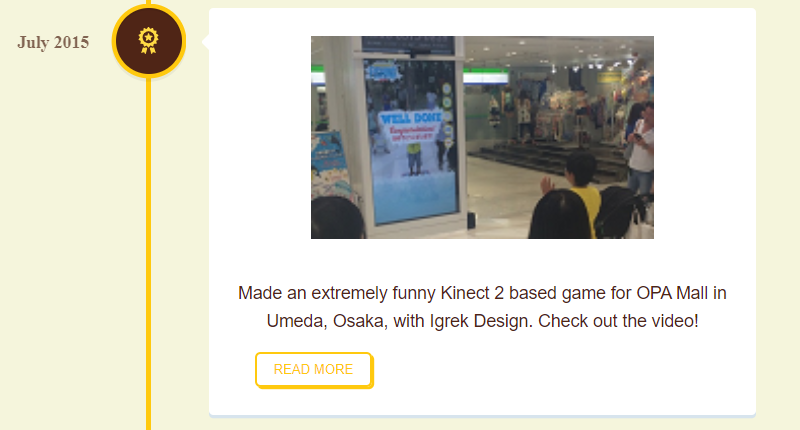
My third client helped to get my portfolio look not only credible but also simply awesome, thanks to the insanely cool and super funny YouTube video they produced.
Now I got it going and I had good results to show to new potential clients, all within the Elance system.
The Palo Alto startup’s project got serious at the same time, and I had several consulting gigs going in Singapore, so I was quite busy that summer. We made a quite complicated demo including numerous design iterations. 3 big milestones I defined for them, the project totaling $8,000 minus Elance fees, so by the end of August (less than 4 months from the first project) my stats started looking good enough already: Earnings well over $13,000, 5-star rating in every project and of both types, hourly and fixed-price, and pretty cool portfolio with that YouTube video made by my Japanese client.
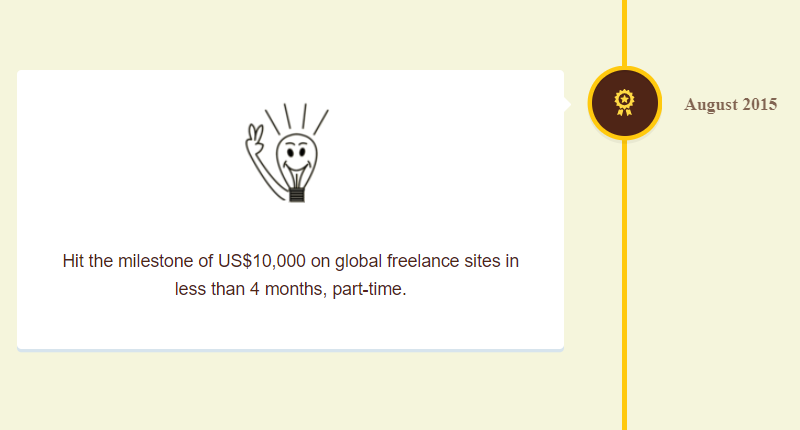
Passing $10,000 in total earnings felt like the tipping point. A lot of things got a lot easier now.
There I had it: a credible online profile to get more projects from the global markets! I knew I had nailed it now! I could focus on getting only the right kinds of clients also in the future, it worked brilliantly!
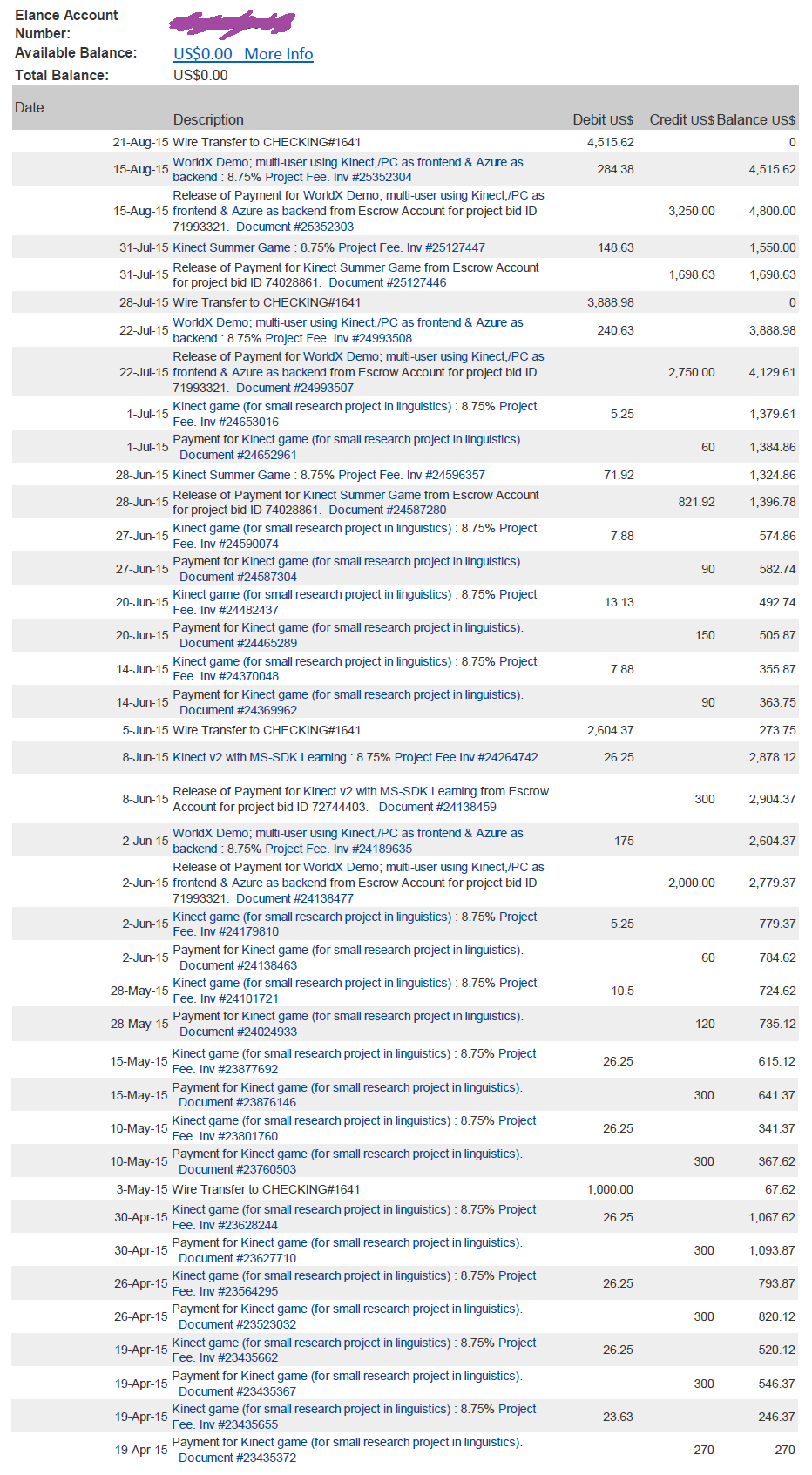
My Elance transactions in 2015. Now it started to feel like a really good opportunity.
Becoming a Top Rated Upwork freelancer
What happened next was quite interesting. I completed all the first projects before September, and at the end of the year, Elance became Upwork with an option for freelancers to convert their profiles to the new system. This worked out really well for me. I automatically received a Top Rated status, a clean 5-star average rating, and my earnings total carried over to Upwork as well. It looked great!
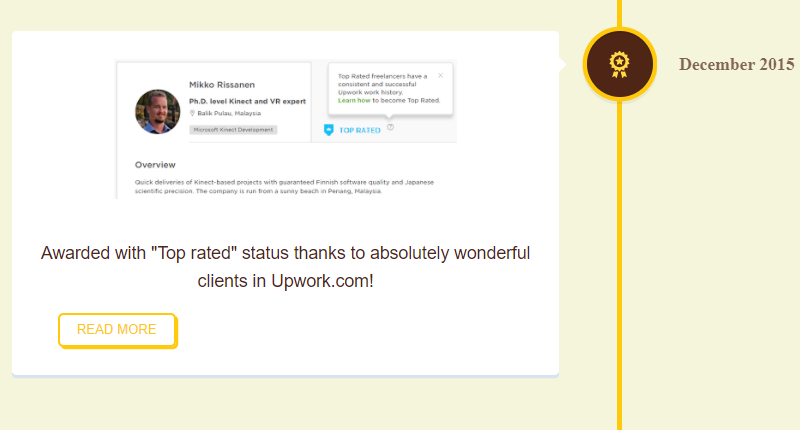
I was “grandfathered” into the new Upwork platform from Elance although my profile became active just half a year earlier. Top Rated from Day 1 of Upwork!
Now, as I had a credible Upwork profile I didn’t need to hunt for projects anymore. It felt as if the tide had turned overnight! I continued with my offline projects, of course, but otherwise, I could fill my days by just going through project invitations and picking the reasonable ones for further discussion. Upwork did it all for me automatically. For most of the year 2016, I could already rely on getting projects just about whenever I liked.
This is the dream state of a freelancer, isn’t it? No costs involved in finding projects (only the standard cut on project price), freedom of choice of the type and timing of new engagements, reasonable security because I now had multiple sales channels that all worked … I got everything in less than a year from the first Elance project, can you believe that!
My niche was hot and although small, it was big enough for me. I had little if any competition in the individual freelancer category as most others (even those with hundreds of thousands of dollars of earnings) worked on a wider market. I was the only credible guy specializing in Kinect, and Kinect only. So, I thought, global competition didn’t bother me much and was in fact quite a fair fight. May the best coconut man win. 😀
Basically, from this point on, I just sat on my butt and let the system work for me.
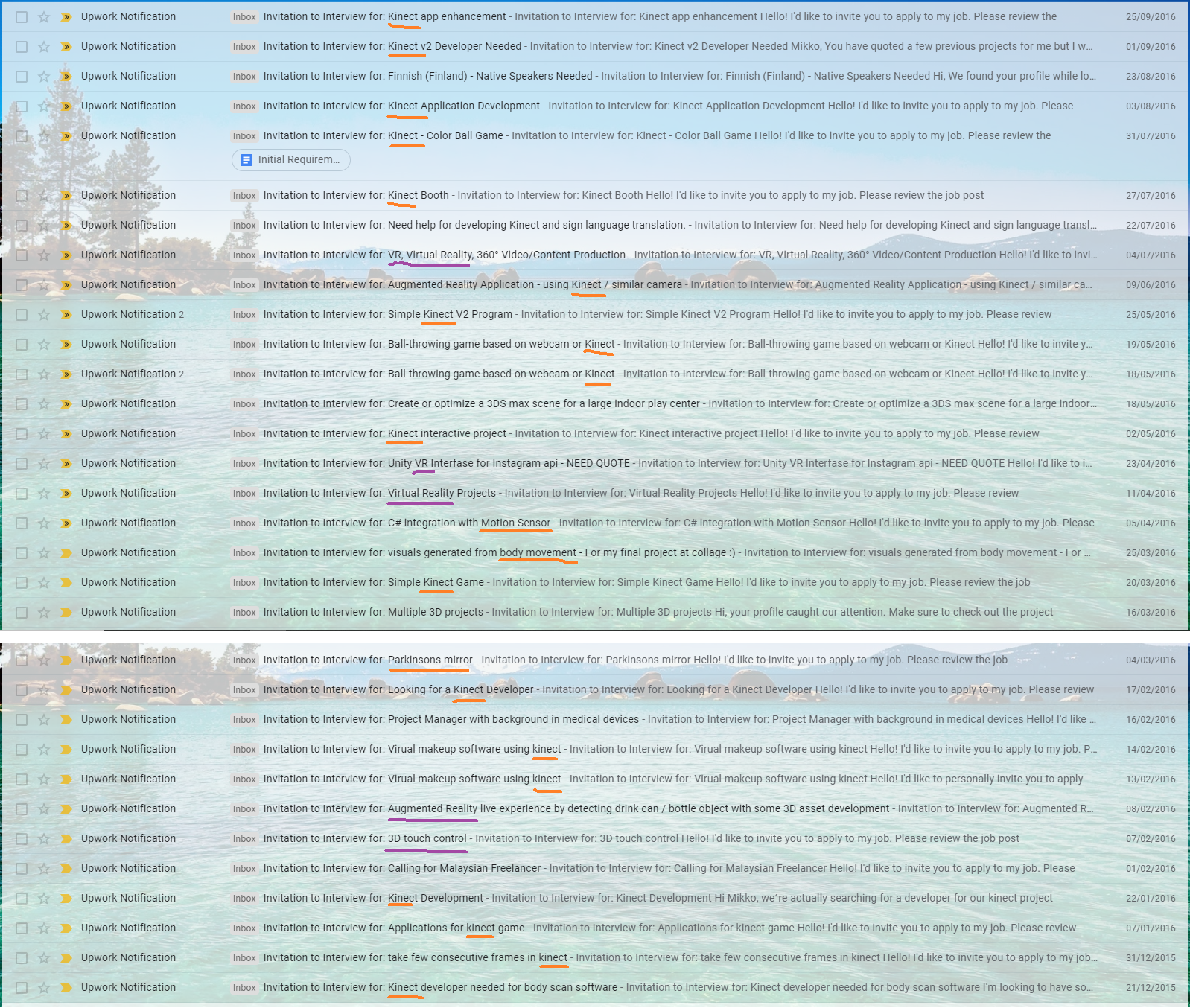
List of the early email notifications for invitations to interviews. My keyword “Kinect” was so hot! Even secondary ones (virtual reality, augmented reality) were very popular.
In April, I had to start auto-rejecting all projects below $3,000 because I was drowning in invitations. My profile started to get a lot of hits and appear on page one with my one-and-only keyword: “Kinect.”
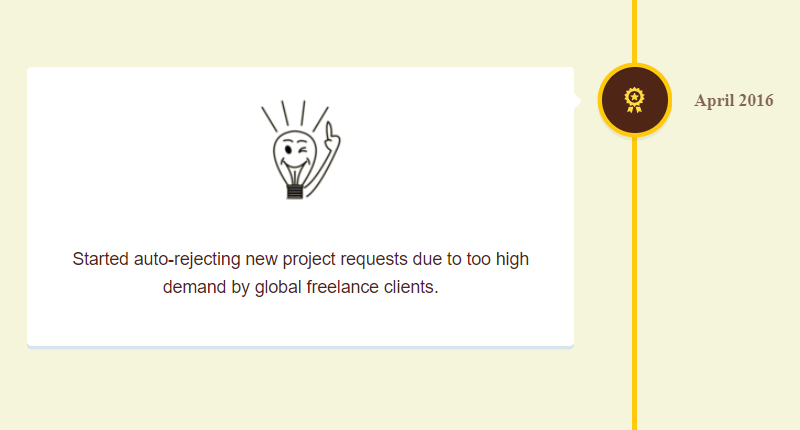
When things started rolling on Upwork, they really rolled!
Then, in June, Upwork search on “Kinect” started bringing my profile as the first hit.
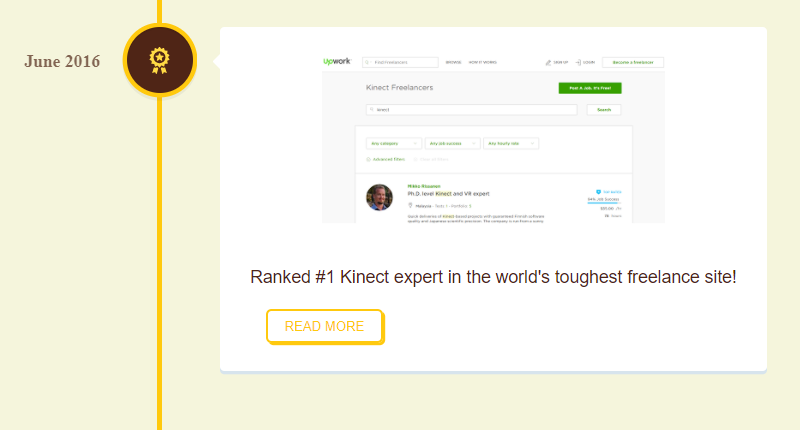
A tad over a year to get the prestige Numero Uno status!
The system soon changed so that the search ranking was not always the same. It seemed to depend on your browser and week… Later I learned, they had a 2-week cycle to make sure everyone got some exposure at some point, which I thought was fair and quite welcoming for new freelancers. Anyway, my profile kept getting hits which turned into loads of invitations which in turn gave me the choice of picking the best projects only. And that’s exactly what I did from that point on (and I still do).
Later years
Because of being able to pick my projects, I could easily yank up my rates because of market demand. From $30 I went quickly to $44, $55, $66, $77, $88, $99, and eventually, I just started adding hundreds to my 99 bucks. At some point, the client really doesn’t care how much the price is because they know they are getting value for the money. Additionally, there is some value in the impression of working with the global top guy on its own.
At that point, the service needs to be not only great but also the experience of working together must be great too. And, since the money is not the issue, you’d be free to throw in some unexpected benefits of working with you which make the client absolutely love you! My focus was mainly on polishing my presentation, storytelling, and interviewing skills, nothing more.
2016 was dynamite and in 2017 I was probably spending almost half of my time on Upwork projects. Things were getting really sweet! I’ve actually had a lot of fun with absolutely great clients on Upwork ever since. Why? Probably because I have always been, from the very start with all that “gatoring” I did, highly selective. Only perfect matches do. Soon I stopped doing work for design agencies as I focused on funded startups exclusively.
These days, 6 years from the start, I’m more flexible on many things as I find many things quite interesting and since clients keep coming, I’m free to pick those projects that have some kind of synergies with what I want to do myself anyway. I just get a client to sponsor part of that, kind of. A recent example is making a virtual multi-user environment that runs with 1,000 concurrent users… and an experience that helped me a lot in another similar project, even if using different tech stacks.
I also learned how to change my niche, and I’ve done it now several times. In 2017, I dropped Kinect for good because of simply getting a bit tired of that tech stack. Enough was enough: 1 year as a startup CTO and 3 as a freelancer. I needed a change.
As virtual reality (VR) headsets got better year by year (particularly Oculus Rift and HTC Vive), it made sense to go back to my primary interest in all these fields, VR training simulators. And it didn’t take long to find a perfect, and by “perfect” I mean absolutely perfect, client. A brave new company based out of Sydney, Australia. At this point, despite locking my profile into just one keyword, I had no problem making the shift into another niche. This project was intensive, something like nine weeks of full push with a short break in the middle.
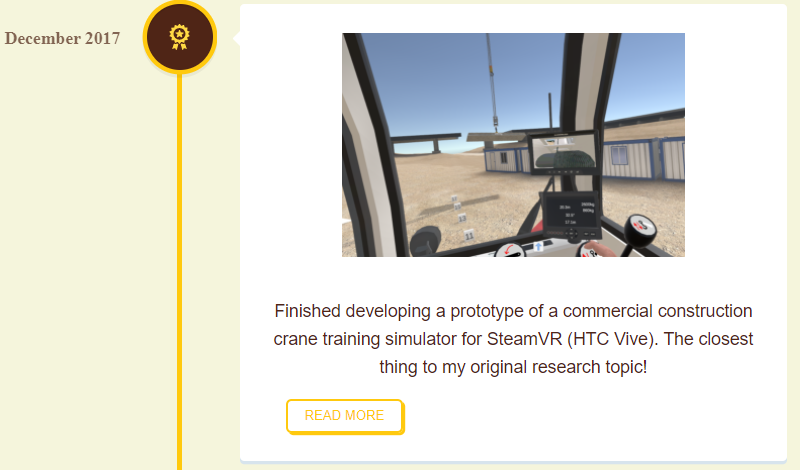
A VR training simulator project done for $21,000 allowed me to change my niche from Kinect to VR applications.
And the table was now open for playing my new niche. Again I had a clear competitive edge against just about all other VR developers. I was one of the few who were now recognized as true experts with several types of experience on the topic: a Ph.D., patenting capability, design of the learning support, and coding. The whole package built on all of my skills again. Perfect, right?
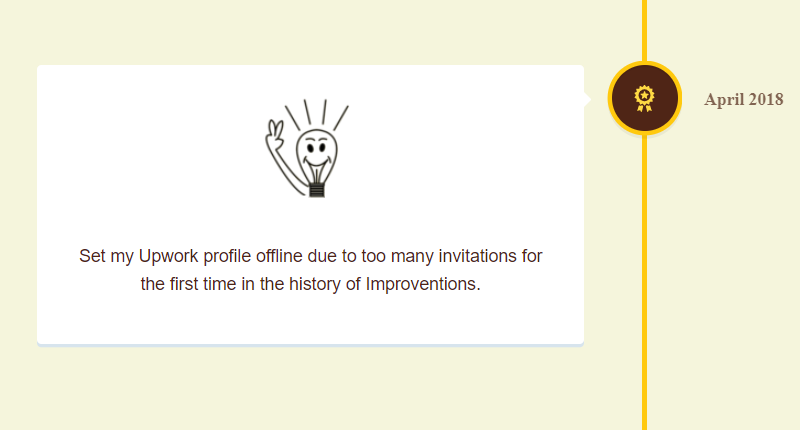
The shift of my niche brought loads of other projects on Upwork and elsewhere, so about 3 years from the start, I had to put things on Upwork on hold because of a complete overload.
At this point, I wasn’t sure if there was any point in continuing on Upwork anymore. I identified myself strongly as a solopreneur, not a freelancer. I was quite overloaded with projects coming to me from multiple other channels (that I increased every year) and it seemed to work OK when I just let clients have a peek at my Upwork profile during an intro call to prove my freelancing capabilities. My profile became useful even outside the site itself!
For example, in some client meetings, I just asked the client to search for “VR” or “HTC Vive” on Upwork, then “training simulator”, then “HoloLens”, and finally “Orbbec”, all searches bouncing my profile on the top of the page. With total earnings looking good. That did all the convincing I ever needed. At some point in 2018, I had to put my profile offline because I couldn’t get any more projects from Upwork. Then, a quarter-year later, I just bounced back without any issues.
I realized I could remain at the top even if I didn’t push for it.
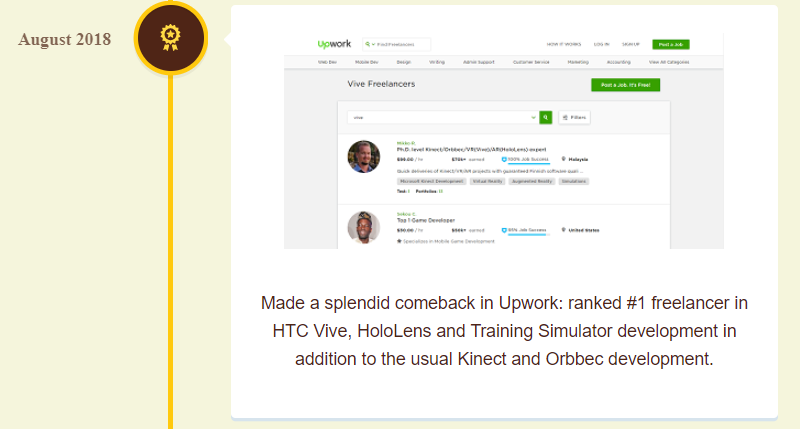
After 4 months of doing absolutely nothing on Upwork, my profile kept getting hits right after setting it back available.
One interesting aspect of all this Upworking was that I never really engaged in the community forums where newbies go to get help from seniors. My “gatoring” approach was the only way I could ever do it without getting pinned in a process that might kill me… because of a lack of funds or the amount of frustration. It was only in 2020 when I started posting tips and tricks on that forum that is unfortunately full of that 50% of the people on the wrong side of the table. Never seeing a penny coming via Upwork without help. And often even with help.
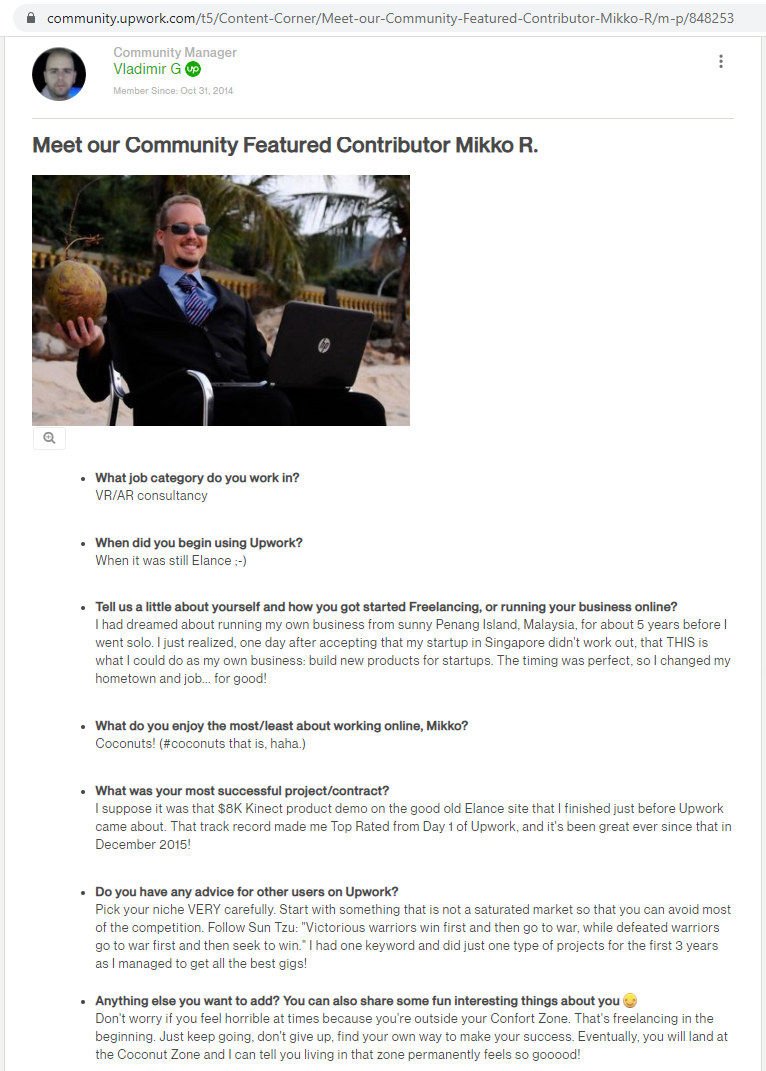
I still highlight the first $8K project as my breakthrough project everywhere, including Upwork community forums where I try to help as many new freelancers as possible when I can.
(If you’re ever wondering why I always use this same photo, it is because I don’t have any others! I’m always the man behind the camera. This is the only one my coconut girl took for me.)
The secret recipe for success when you start your freelancer journey
So that was my epic story. How should yours start? Well, I can tell you, there is no secret recipe. And at the same time, there is. Would my approach work for you? No. Not by blindly copying it. Not without an intelligent adaptation.
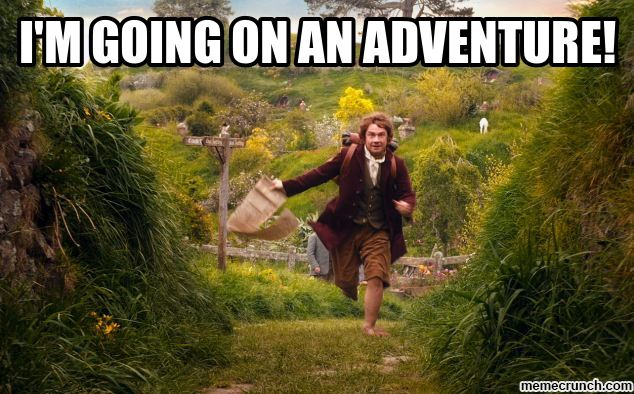
Starting online freelancing is hard. Insanely hard. And if you survive and you come back, you won’t be the same. (You may end up becoming a solopreneur.)
But there are elements that you need for building a good freelance online business where you don’t get stuck in any Mirkwood, avoid most of the battles, and go straight for the treasure fairly quickly:
- Real skill set. Most importantly, you must have skills that can make a difference in other people’s businesses. That’s the core. My skills came from my research background in Japan, my innovation and patenting background in Sweden, and my business background in Singapore. And the core – software development – came from my early twenties in Finland. The whole package of who you are, what you know, and how you can help, make your business. Because you are the business.
- Understanding of your market. Know the people you intend to serve. I targeted startups, so that’s exactly who became my main clientele. I was my own client earlier as a technical co-founder/CTO. I knew where startups go, particularly Upwork because that’s where I had hired folks to help me as a startup founder. Not knowing what ticks your clients will lengthen the starting up period of your freelance business by months or even years.
- Profile. Your skills won’t help much unless others can perceive the results of using them. Making a good profile that speaks to the dream clients is mandatory. Informative, unique, and clickable. More about creating great profiles is explained here: Freelancer Profile Writing 101.
- Proposals. This is perhaps the easiest part to learn when you have some background in writing just about anything. My case, 55 science papers, and loads of academic funding applications. In each of these, be it a scientific contribution or a research grant application, there is a heavy focus on explaining why the work needed to be done. It’s basically the same logic in proposals, but in an even more concise form. My proposal-writing guide is available here: Have You Proposed Right? Part 2: How I Wrote Winning Proposals.
- Interviews. Even if all of the above works out but you’re not able to talk to people who might want to hire you, your chances are slim. The interviews, surprisingly, were something I excelled at from Day 1. It was actually fun! Probably because I was in the client’s shoes earlier in my career. I knew their world, it was easy to get along. My tips for interviews are here: Code of Conduct for Online Freelancers, Part 1.
- Strategy. Make sure all your early projects feed into your portfolio in a way it grows credible quickly. There is no faster way of doing this! Executing a lot of tiny projects doesn’t really do it, unless your business domain dictates it, such as $10 logo deliveries. You would never reach very high even if you got some business going. That would be more like a side business anyway. More about how to think strategically about your expertise is available here: Freelancing – It’s an Expert’s Game.
The trick for any beginner is how you do it. What is your version of this approach? How would you do it? Do you already excel in some of the above because of your previous career? Do you have someone to help you learn those skills? Do you buy guides and courses (OMG those courses, particularly the ones that say “buy this course and you become Top Rated on Upwork” or something!) and if you do, be sure to buy the proper ones from those who’ve actually made it out there.
Even the tips on the Upwork community forum you might get are sometimes half-hearted superficial suggestions that come from people who happen to be online at the time of you posting your question. They don’t know your story, they don’t know you. Real help is a bit harder to give.
Basically, the above six bullets apply to pretty much every business, more or less with the difference being 3 is called marketing and 4 and 5 are combined into something called a sales process. The obvious part that I didn’t list is the operation, i.e. doing the core work. Not being good at the core work will never make you a good freelancer. Know you **it first, then try to build a business around it. Even if your skill level is great, it might not work out if you lack a solid work process and other operational aspects of doing it as a one-person business.
In reality, your chance of success depends on understanding what ticks your ideal clients and how you manage to tick them. It’s something you do and something you are at the same time. You can’t fake it, you can’t copy it from others. But you can learn and get inspiration from others to find your own way. It’s the business-you that does everything.
It does not depend on the number of proposals you sent (unless you are not yet good at writing proposals, in which case, you could use the practice). It does not depend on the number of revisions you make to your profile. And it does not depend on the hours of interview practice in front of a mirror.
It depends on your understanding of yourself and that very narrow niche market that needs you most, your skillset, your learning speed, and your sense of realism. Don’t forget the last part. Getting real, making calculations, weighing your odds, all that makes your chances of success higher than random doing.
The rest of the articles on this site, old and forthcoming, will help you to get a realistic picture of running a freelance business that stands the test of time, niche changes, and everything else related. Go through them. And if you found any of this useful, I’d love to hear from you. I’m a real person. (Or half-man, half-coconut, depending on who you ask.)
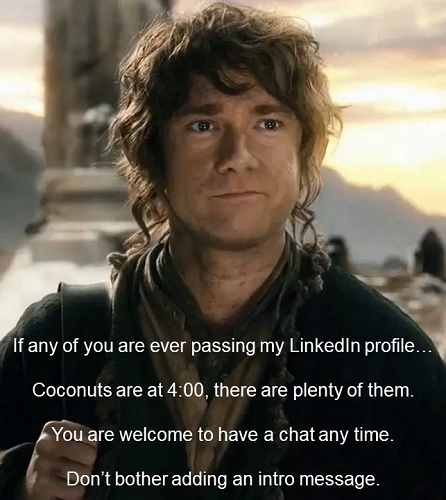
Happy to connect and give a few specific tips on LinkedIn.
Dr. Mike
Mikko J. Rissanen, Ph.D., a.k.a. Dr. Mike, is an accomplished solopreneur living in a tropical paradise, inventing cool tech and coding from his beach office... and eating coconuts all day, every day. He has been running his one-man show in Penang, Malaysia, since 2014 until he moved the business to the United States as I2 Network in 2021. He is one of the most highly paid freelancers on Upwork and he has been supporting hundreds of starting freelancers since 2017. Follow his latest tips on LinkedIn or seek his personal guidance as a CoachLancer member!
One thought on “How to Start Freelancing and Make It to the Global Top – My First Year on Upwork”
Comments are closed.